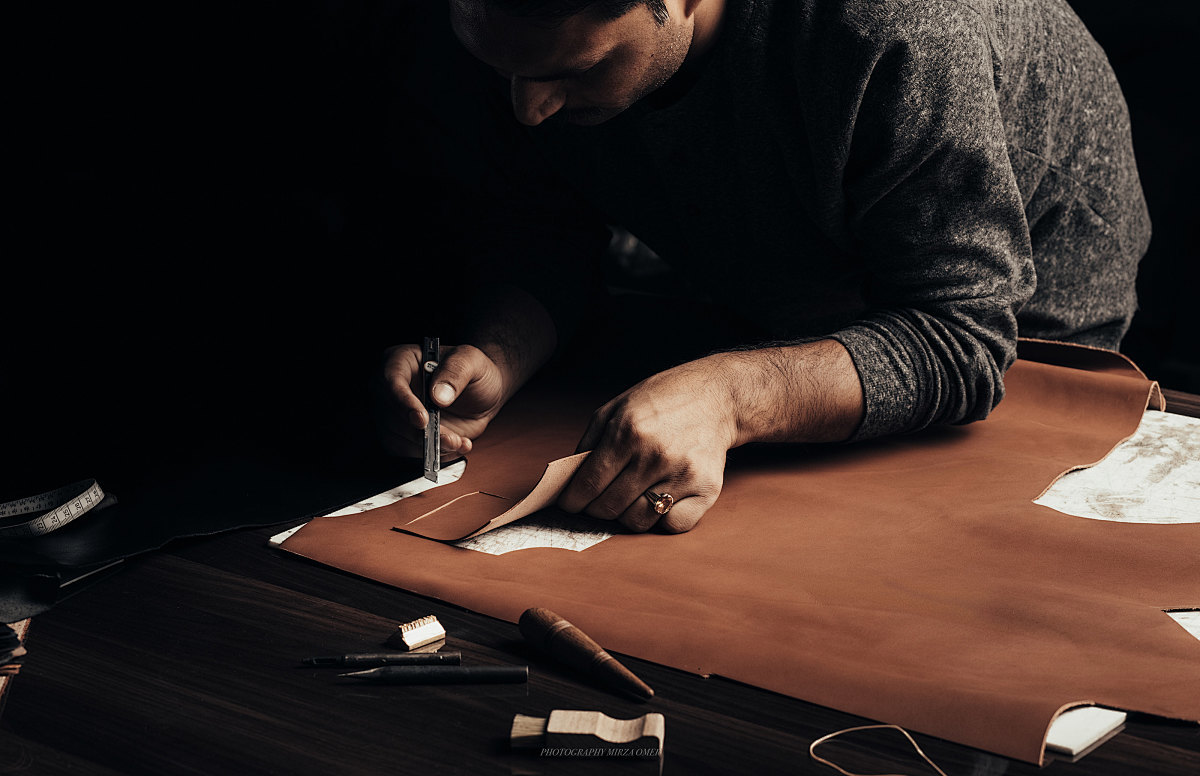In this decade, streetwear brands and luxury fashion have "exchanged lives"
Jul 11,2024

In the 2010s, we witnessed an "identity" crisis that rewrote the rules of the game. Streetwear doesn't want to do streetwear anymore, and fashion doesn't want to do fashion: they decided to be each other.
In 2009, Virgil Abloh and Don Crawley opened a boutique called RSVP Gallery in Chicago's Wicker Park, where they put together art by Takashi Murakami and Kaws, along with Comme des Garçons, antique Chanel, A Bathing Ape, and Ambush jewelry. Jazmin Soto and Shayne Oliver of Hood By Air started throwing GHE20G0TH1K party in Brooklyn, New York, where Hood By Air, an independent clothing brand derived from social occasions, was just starting to take off. At the time, Louis Vuitton's creative director was Marc Jacobs, who invited Kanye West to design a capsule collection of luxury sneakers.
West's high-top sneakers, the Jasper, the Don and the Mr Hudson, were a sign of success in street culture, transforming him from a consumer of luxury goods to a creator. Of course, Yohji Yamamoto and Adidas collaborated on the Y-3 series (founded in 2003), and Alexander McQueen collaborated with Puma on McQ (founded in 2005). While these partnerships are just a sign that fashion designers are willing to flex their talents in lightweight sneakers and sportswear, West and Louis Vuitton are quite different: it's not high-end fashion that's sinking, it's street culture that's up.
"Old luxury", once synonymous with "exclusivity", "desire for success" and "temptation", has been replaced by a movement based on social inclusion, accessibility and knowledge. Brands, artists, and designers who are actively pursuing new practices are all too familiar with the rules of old luxury, and they have rewritten the rules to better suit their needs. They understand how brands build desire and followers because they are followers themselves. What's more, they rationalize the existence of street culture by transforming luxury from an industry into a cultural platform.
The "old luxury" has been replaced by a movement based on social inclusion, accessibility and knowledge.
By the 2010s, Kanye West had become a well-known fashion icon in a way that had not been seen before in his era of stardom. His 2011 album Watch the Throne with Jay-Z pioneered a certain "lavish rap" style, with Riccardo Tisci acting as artistic direction for the album cover and touring costumes. West's support of the Tisci-era Givenchy collection also strengthened the luxury brand's reputation in the street culture scene, turning Rotwell dog and shark-embellished hoodies and sweatshirts into coveted items. Streetwear-conscious audiences are starting to pay more and more attention to the runway. Shayne Oliver's Hood By Air and Virgil Abloh's Off-White don't define themselves as "contemporary" street brands in department stores, but rather "designer brands" that belong to the same alliance as the fashion houses of the late European design masters.
The rapid spread of social media and the connected world has changed the language of global consumption. What you can see and what you can buy are already in sync, and fashion has become a new landscape to be seen. The rise of platforms such as Instagram has further weakened the power of traditional fashion leaders to speak on trends and tastes, allowing independent creators and brands to nurture their own audiences without having to please traditional retailers and magazines.
The boundaries between "street culture" and "luxury" have not been broken, they have only flattened.
Brands like Rhuigi Villaseñor's Rhude, Kerby Jean-Raymond's Pyer Moss, and Jerry Lorenzo's Fear Of God have achieved success before the Old World embraced them enthusiastically. These brands are especially built on the support of discerning consumers, who are becoming more and more sophisticated in their tastes cultivated through self-education. This sentiment exists not only among committed fans of the brand, but also among connoisseurs who dare to point out problems when the quality of fashion brands declines. That's when we learned that the "brand" was no longer an elite club, but a platform for gathering audiences around cultural credibility, the secret recipe for turning a brand into a real community.
The boundaries between "street culture" and "luxury" have not been broken, they have only flattened.
Virgil Abloh told BoF in 2014, "I just wish we could do the same as James Jebbias, Shawn Stüssys... All these streetwear legends, it's up to us to take their job. "It was really prescient, and that moment was more like some kind of turning point. The interview, titled "Streetwear's New Guard," inspired Farfetch's recent $675 million acquisition of the company's name, New Guards Group. The Milan-based company has incubated some of the most talked-about fashion brands in recent years, including Off-White, Palm Angels, County of Milan and Heron Preston.
Now it's back to square one. In 2018, in the wake of a cultural appropriation scandal, Gucci reopened its long-closed boutique with Dapper Dan in Harlem, New York. West's Yeezy collection and his ongoing collaboration with Adidas have become a hot topic in pop culture (and political culture). DJ and the three members of streetwear brand Been Trill – Heron Preston, Matthew Williams and Virgil Abloh – have all made fashion names in their own right.
Even Kim Jones (who started his career at streetwear dealer Gimme Five, one of the first wholesalers of Stüssy and Supreme, founded by Michael Kopelman) has closed the loop. The first is Supreme's collaboration with Louis Vuitton in 2017 and most recently with Shawn Stüssy for the latest menswear show at Dior. In the new world of luxury, it is no longer the high price that is desired, but the cultural value. The success story of Supreme and Stüssy is built on the premise that an entire echelon of fashion lovers has been overlooked by the fashion industry. So they reinvent fashion in their own way, with a cultural code of an overlooked market. In the process, they helped create a new universal language for fashion and streetwear.
The arrival of Virgil Abloh in Vuitton and the collaboration between Shawn Stüssy and Dior do not mean that streetwear has risen to prominence, but that luxury has entered a new battlefield. The most important lesson for luxury goods from streetwear is not the drop-like novelty, or the collaboration, or the classic aesthetics of sportswear and military uniforms; Instead, streetwear's stylistic heritage is built on a strong and confident brand identity and its shared values. Such values were born in a creative world of "Do it yourself", clubbing culture, punk, reggae and hip-hop music culture, and so on. New luxury products are born in the hands of creatives who write their own rules of the game and make a name for themselves. We are all doing what they want now.
Keyword:
Latest News









